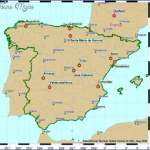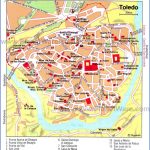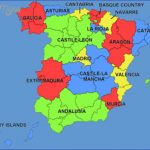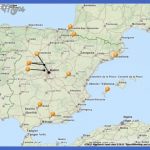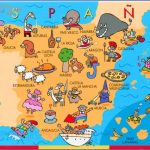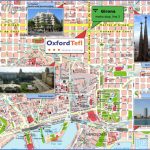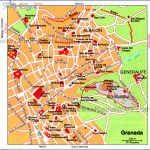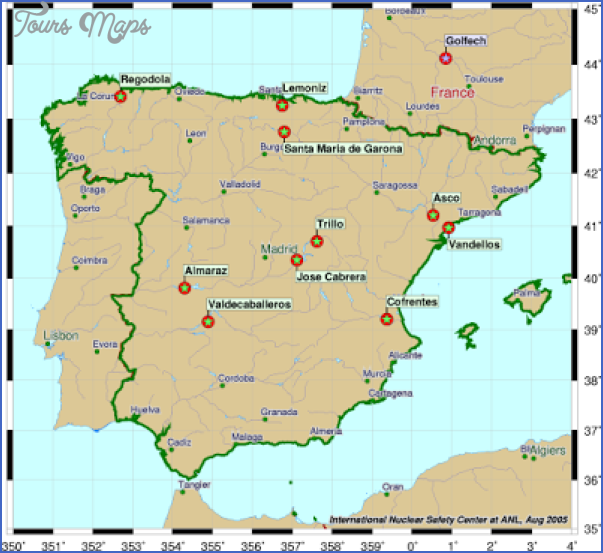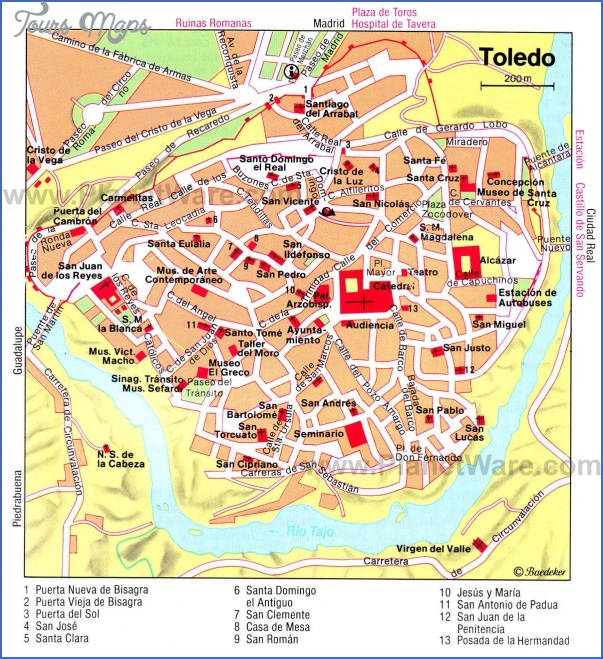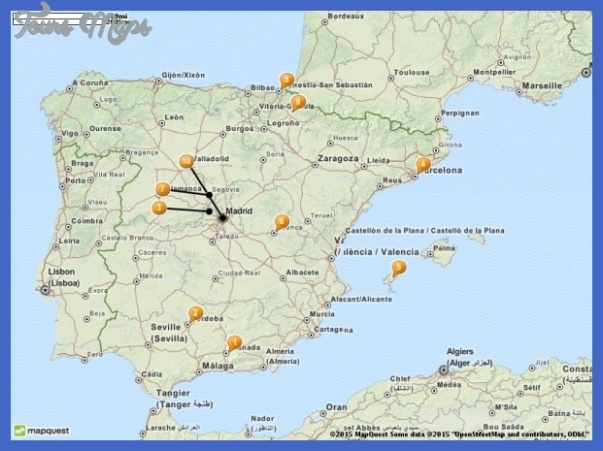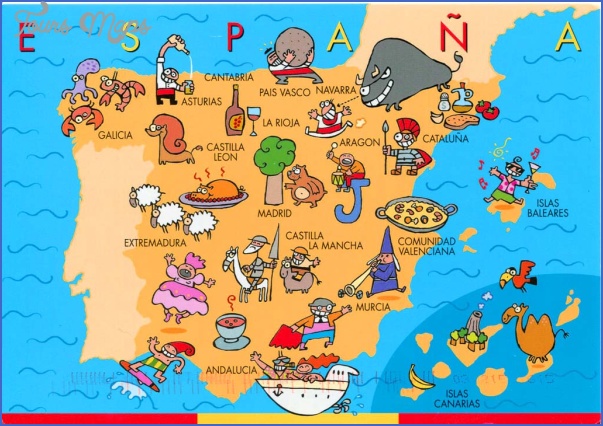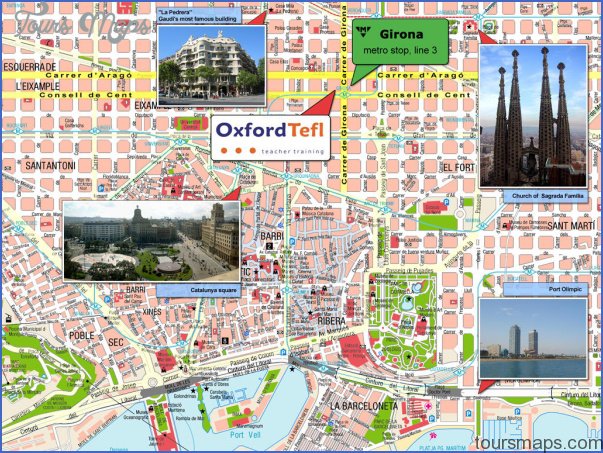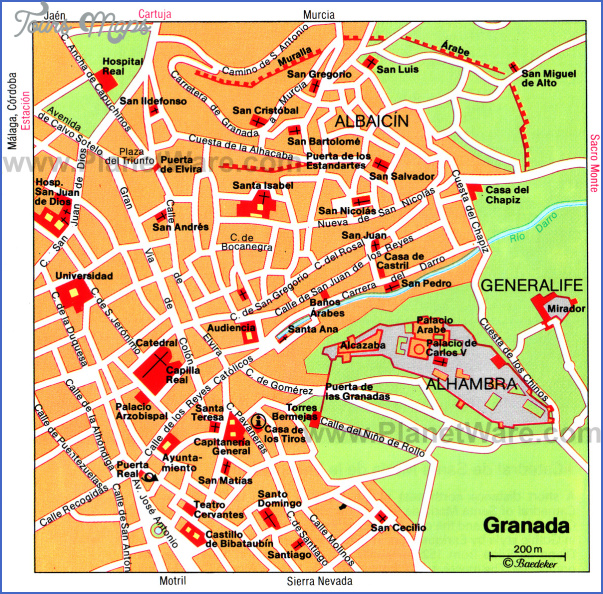The Balearic Islands Mallorca, Minorca and Ibiza in the Mediterranean are sizable tourist centers. Englishmen found them less expensive for spending the winter than remaining at home. Cheap charter flights and tours bring hundreds of thousands of Germans and other Northern Europeans south to the islands and to the Costa del Sol.
For those who really want to live dangerously there is Pamplona, where a tourist may manage to join in the crowd of Navarre youths who risk life and limb in the running of the bulls. Fortified with enough wine, those participating climb over the barriers into the street where a herd of bulls are coursed. It is part of the Fiesta de San Fermin, between July 6 and 20.
Spain’s Canary Islands, sixty-five miles of Africa’s northwest coast, are two-and-a-half hours by jet from Madrid and are popular with Northern Europeans because of the benign climate and low cost. They have not really been discovered by Americans. The Canaries’ most populous island, The Gran Canaria, has a population of 520,000 and boasts a year-round swimming climate. Scenery varies from lush tropical jungle to stark and arid deserts. The islands have over nine hundred varieties of flowering plants and two hundred twenty species of birds, including the native canary. Las Palmas has more than one hundred hotels and twice as many restaurants. Las Palmas on Gran Canaria is the hub for Canary Island tourism.
Spain is mystery, Spain is exotic, much of Spain is a little eerie. Its most awesome attraction is the El Valle de los Caidos, the Valley of the Fallen, hammered out of solid rock at the direction of General Franco, by thousands of prisoners from the Spanish Civil War. The place is a sepulcher equipped with an organ. The bones of hundreds of soldiers who died in the Civil War are interred there. So, too, is General Franco.
About an hour’s drive from Madrid, the setting, high in the mountains, is awesome with clouds as a close backdrop. It is a huge cavern with a supernatural feeling. The National Tourist office does not promote the place. Perhaps it evokes overmuch of the Spanish past when brother fought brother, no quarter given, none asked.
Catholic Spain. Few countries are more homogeneous in religion. In the past it was Catholicism gone amuck. Religion was a convenient rationalization for enslaving millions of Indians in Mexico and South America. The Inquisition was an act of faith for rooting out and preferably disposing of any who believed other than the true faith. Church and state were almost one entity.
Spain Map Tourist Attractions Photo Gallery
Maybe You Like Them Too
- Explore Pulau Sebang Malaysia with this Detailed Map
- Explore Southgate, Michigan with this detailed map
- Explore Les Accates, France with this Detailed Map
- Explore Góra Kalwaria, Poland with this detailed map
- Explore Gumdag, Turkmenistan with this detailed map

